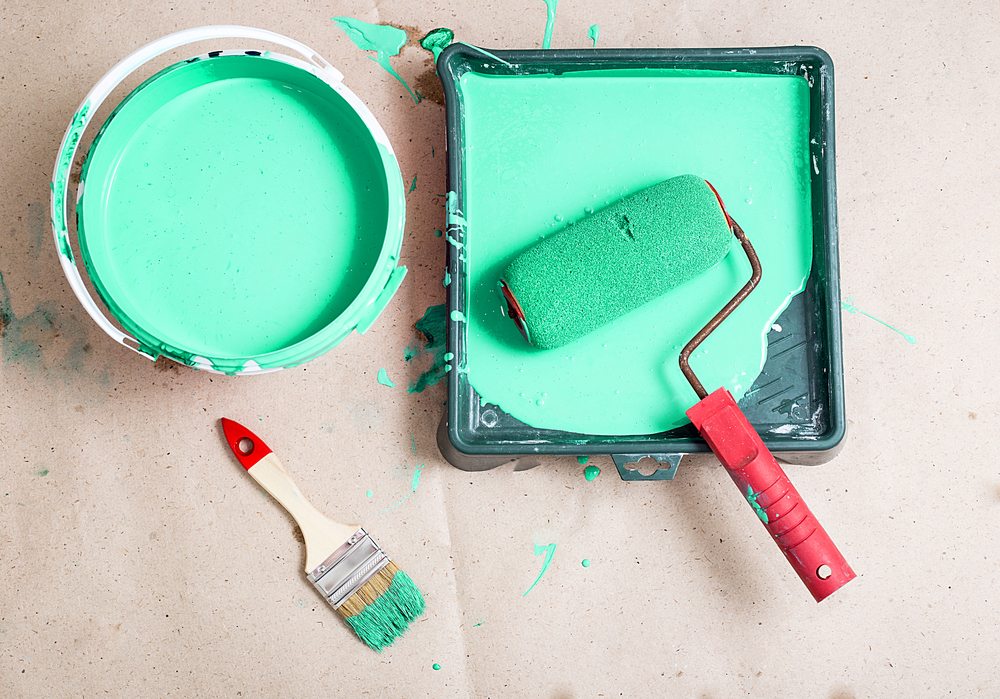The results of our DIY paint projects stay with us for a long time and affect the enjoyment we get from our homes every day. Yet we do most of them without any formal training or particular knowledge about interior painting
One of the reasons for that is it seems so easy to do something like paint the walls of your living room. But if you’ve ever used a good professional painting service, you will have noticed two things. One is how fast they got the job done. The second is how flawless the finished project seemed to be.
Here’s the Secret of Paint Professionals
They know what they are doing. It doesn’t mean that you don’t or can’t learn how to paint like a pro. It just means that doing a great job of painting the inside of your home is not nearly as easy as it seems.
Breakdown the Process and Learn More About Each Step
One of the reasons that we feel that painting is so easy is because we think of it a single process. Get the paint in the can onto the wall with a brush or roller.
We gave you some interior paining tips in a recent blog post. When you look at each tip, including getting clean edges and protecting your floors from paint drops, you’ll see that each one can become its own process.
It isn’t until you start to breakdown the overall process of painting into its parts that you begin to see how much you can do to improve the results from your next painting project.
To give you a better idea of what we mean, we thought we’d take a closer look at some painting rolling tips and techniques that the pros use. Before you start painting, consider the following tips to become a rockin’ paint roller.
1. Get the Right Equipment
First, don’t cheap out. Inexpensive roller sleeves and frames end up costing you more through the extra effort needed, wasted paint and the uneven results. High-quality roller sleeves hold more paint, which means you don’t need to add paint as often. Better roller frames will simply last longer. You’ll also need a broom handle to extend your reach.
Instead of using a paint tray, which you need to refill often, try using a five-gallon bucket and a bucket screen that hangs over the inside edge of the bucket. The screen does the same thing as the extended part of the paint tray, which is to let you even out the paint on the roller by rolling it back and forth over the screen.
Not only is the bucket/screen method faster, it reduces the chance of paint colour inconsistencies and there’s much less chance of tripping over it (yes, you know what we mean!)
2. Use a Brush Along in the Corners and Edges
Before you use the roller, brush paint into the corners of the wall and along the edges close to the ceiling and molding. Make sure to spread the paint thoroughly and feather the paint into the open area of the wall to avoid brush marks.
3. Let the Paint do the Work
Many do-it-yourselfers tend to use too much pressure when rolling paint onto a wall. Your good quality roller holds more paint so you need to use only light pressure. Pressing too hard can also destroy the nap of your roller.
Avoiding lap marks means keeping paint from drying. When you apply more paint, it will take longer to dry. Using this method means you can roll on lots of paint over a large section of wall (keep it to a three or four feet in width if this is your first paint project), and go back over it with a drier roller to smooth out the paint.
4. Don’t Deep Dip the Roller
Again, your better quality roller will pick up lots of paint. You should only dip the roller into the paint as deep as the nap of the roller. If you dip it any deeper, you’ll get paint inside the roller cover and it will seep out as you paint leaving a line of paint on the wall that you’ll have to deal with later.
5. Roll on the Paint
Using a sweeping stroke, roll the paint onto the wall starting about a foot or two from the corner and roll up and down back toward the corner. Move over about three-quarters of a roller width with each stroke to overlap the coat of paint and get as close to the wall as you can.
6. Smooth the Paint
When you’ve finished laying on the paint for the section of wall you want to cover and before the paint begins to dry (more experienced painters may be able to lay on paint over an entire wall) smooth the paint without adding more paint to the roller. Get as close to the corners, ceiling and molding edges as you can, overlapping as much of your previous brush work as possible.
7. Look for Trapped Debris
It’s impossible to complete the job without some small debris being trapped in the paint. As you smooth the paint, use a wet rag to pick off any debris and smooth over the mark.
That’s it. Well, except for the clean up. It’s important to note that time is of the essence when rollering paint. If the paint you laid on begins to dry before you smooth it out, it could leave bumps in the finish that you’ll have to sand out and repaint. Please don’t hesitate to ask anyone here at the Paint People for more tips and advice to help your next paint project.


